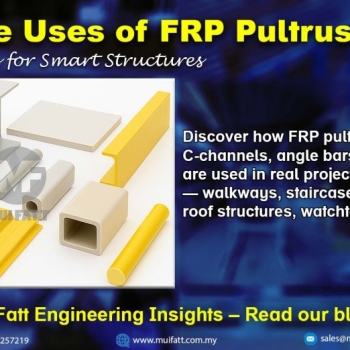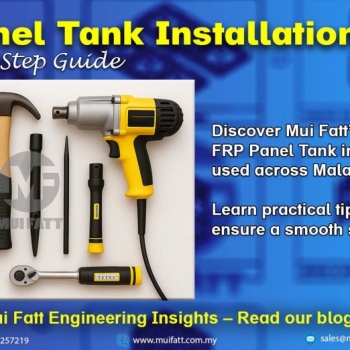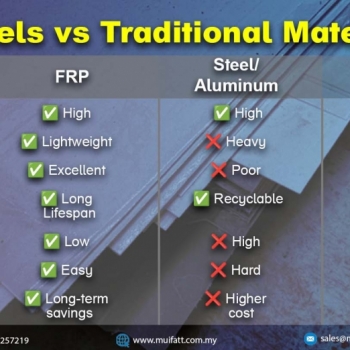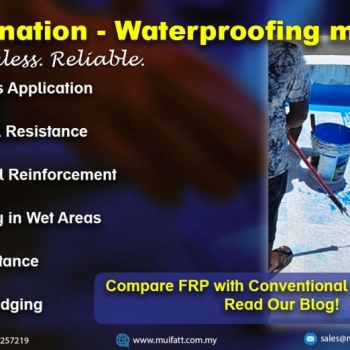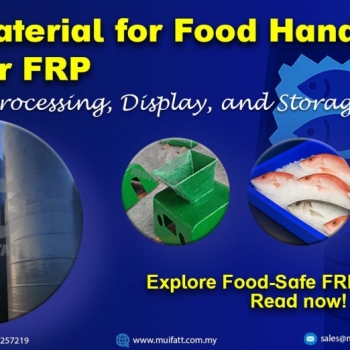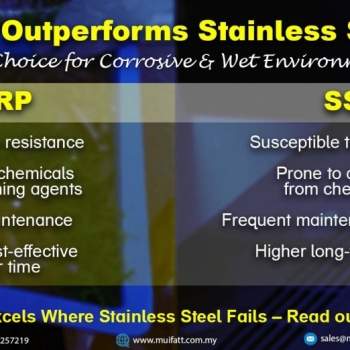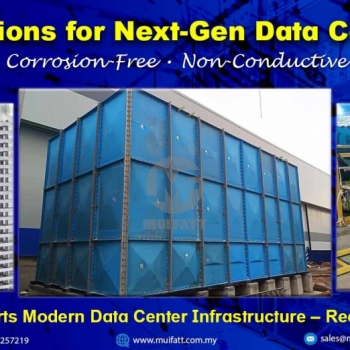FRP pultruded profiles are reshaping structural possibilities across Malaysia. From STP staircases to public park shelters, explore how these modular components enable custom FRP solutions—only from Mui Fatt.
The FRP Pultrusion Process: A Guide to Strength & Efficiency
20 Mar 2025
- Key Takeaways
- How the FRP Pultrusion Process Works
- Advantages of Pultruded FRP Profiles
- Pultrusion vs. Hand Layup vs. Filament Winding
- Choosing the Right FRP Process for Your Project
- Applications of Pultruded FRP Profiles in Structural Projects
- Case Studies: Pultrusion in Action
- Frequently Asked Questions (FAQs)
Key Takeaways
-
FRP pultrusion is a continuous process that produces high-strength, corrosion-resistant profiles.
-
Pultruded FRP is ideal for structural applications due to its lightweight nature and durability.
-
Pultrusion is best suited for long, uniform profiles compared to hand layup and filament winding.
-
FRP pultruded profiles are widely used in bridges, platforms, handrails, and industrial walkways.
Fiberglass-reinforced plastic (FRP) pultrusion is a manufacturing process that continuously produces high-strength, lightweight, and corrosion-resistant composite profiles. This process is widely used in structural applications where traditional materials like steel or aluminum may not perform well due to corrosion or weight limitations.
How the FRP Pultrusion Process Works
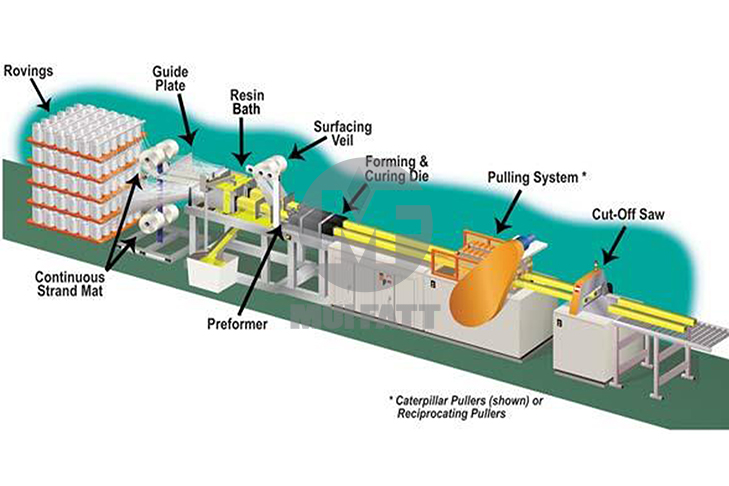
Pultrusion involves pulling raw materials through a shaping and curing process to create strong, uniform profiles. Here’s a breakdown of the key steps:
Reinforcement Selection
Fiberglass reinforcements such as roving and mat provide high tensile strength and structural integrity.
Resin Impregnation
The reinforcements are pulled through a resin bath and saturated with polymer resin (e.g., polyester, vinyl ester, epoxy) to enhance durability.
Preforming & Shaping
The resin-impregnated fibers pass through a preforming system to align and shape them according to the desired profile.
Heated Die Curing
The shaped material moves through a heated steel die, where it hardens through controlled polymerization, ensuring uniformity and strength.
Continuous Process
Since pultrusion is a continuous method, it allows for the efficient production of long, consistent profiles with minimal waste.
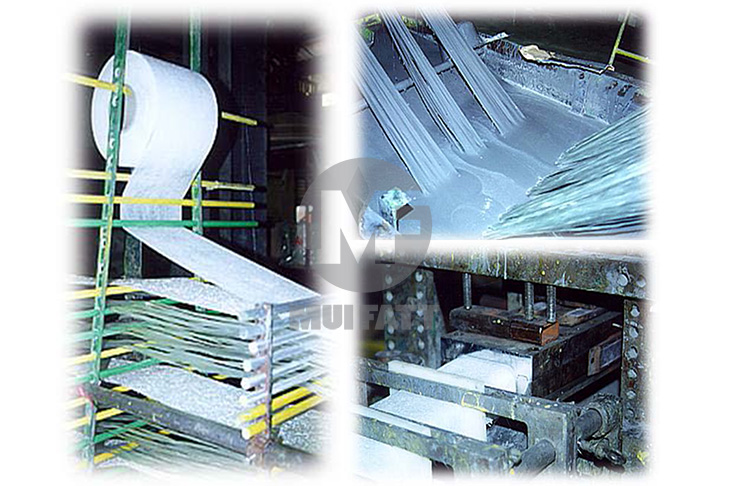
Advantages of Pultruded FRP Profiles
Pultruded FRP profiles offer several benefits over traditional materials:
-
Corrosion Resistance – Ideal for marine, chemical, and outdoor environments.
-
High Strength-to-Weight Ratio – Stronger than steel in some cases while being significantly lighter.
-
Low Maintenance – Does not rust or degrade over time, reducing repair and replacement costs.
-
Electrical & Thermal Insulation – Non-conductive properties make it safe for electrical applications.
-
Customizable Designs – Available in various shapes and sizes for specific engineering needs.
Comparison: Pultrusion, Hand Layup, and Filament Winding
Pultrusion
-
Best for long, continuous profiles with high strength and consistency.
-
Ideal for industrial walkways, bridges, platforms, and handrails.
Hand Layup
-
Manual process suited for customized, complex shapes.
-
Commonly used for tanks, covers, and boat hulls.
Filament Winding
-
Best for cylindrical structures like pipes and pressure vessels.
-
Provides excellent hoop strength and impact resistance.
| Process | Best For | Strengths | Common Applications |
|---|---|---|---|
| Pultrusion | Long, continuous profiles | High strength, uniform consistency | Industrial walkways, bridges, handrails |
| Hand Layup | Custom, complex shapes | Highly customizable | Tanks, covers, boat hulls |
| Filament Winding | Cylindrical structures | Excellent hoop strength, impact resistance | Pipes, pressure vessels |
Choosing the Right FRP Process for Your Project
If your project requires long, uniform structural profiles with high durability, pultrusion is the best option. However, if you need custom-molded parts or cylindrical components, hand layup or filament winding might be more suitable.
Applications of Pultruded FRP Profiles in Structural Projects
Pultruded FRP profiles are widely used in:
-
Industrial Walkways & Platforms – Lightweight and corrosion-resistant.
-
Bridges & Infrastructure – Long-term reliability with minimal maintenance.
-
Handrails & Safety Barriers – Non-conductive and impact-resistant.
-
Cooling Tower Structures – High strength in harsh environments.
Case Studies: Pultrusion in Action
FRP Gratings for a Wastewater Treatment Plant
A wastewater treatment facility requires corrosion-resistant grating for its chemical exposure zones. Mui Fatt supplied pultruded FRP gratings, ensuring long-term durability with minimal maintenance.
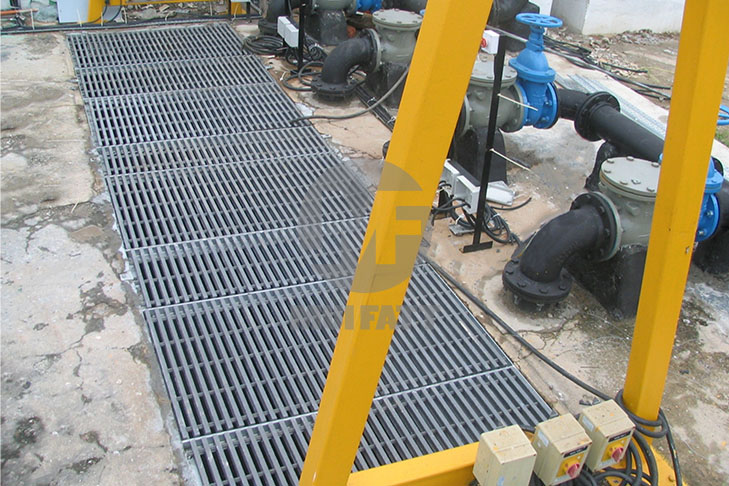
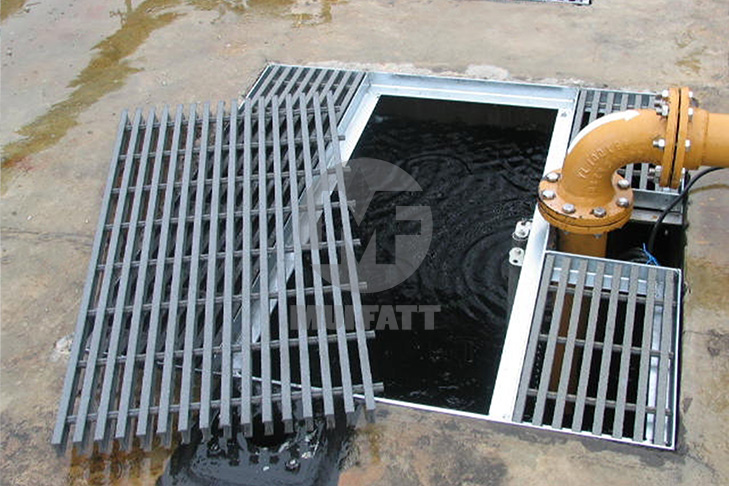
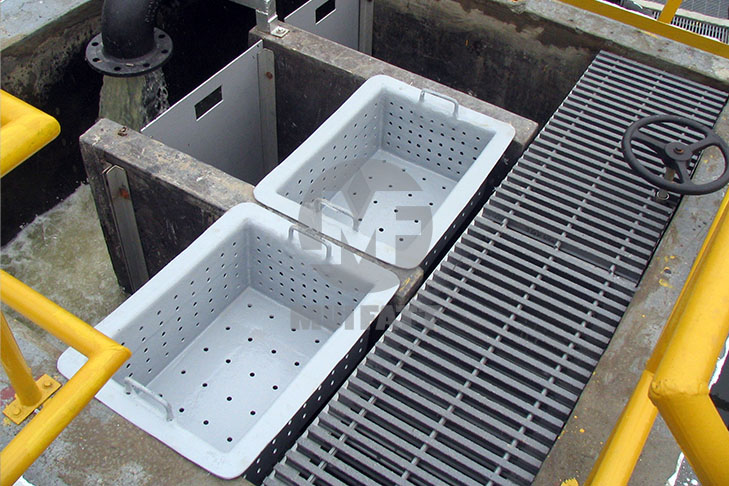
FRP Boardwalk for Wetland
In wetland environments, weight and corrosion resistance are crucial. Pultruded FRP walkways replaced traditional steel structures, improving safety and reducing maintenance costs.
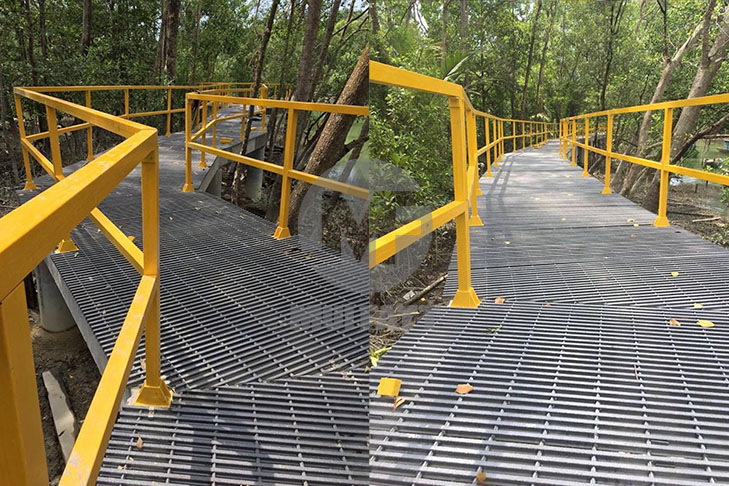
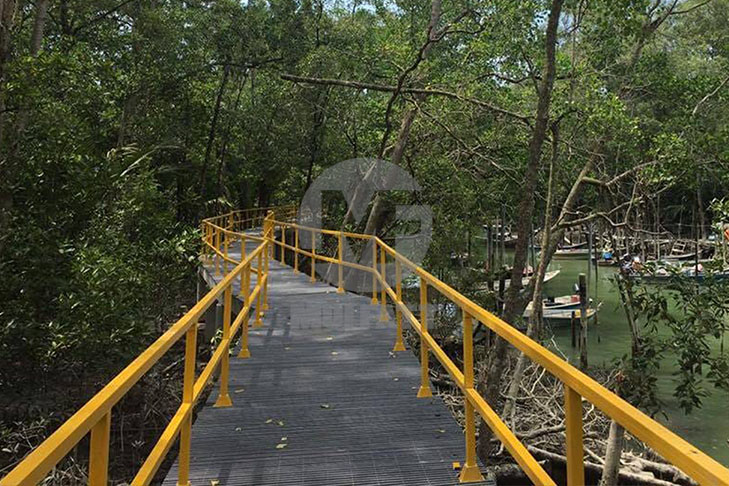
Read more from our project references blog article - FRP Boardwalk Walkway Supply to Majlis Perbandaran Pasir Gudang
Structural FRP for a Covered Pedestrian Walkway Connecting Carpark to Taman Jaya LRT Station
A city infrastructure project required a lightweight yet durable material for a covered pedestrian walkway connecting the carpark to Taman Jaya LRT Station. Pultruded FRP profiles were selected for their easy installation and non-conductive properties, ensuring safety as the walkway was adjacent to a power station.
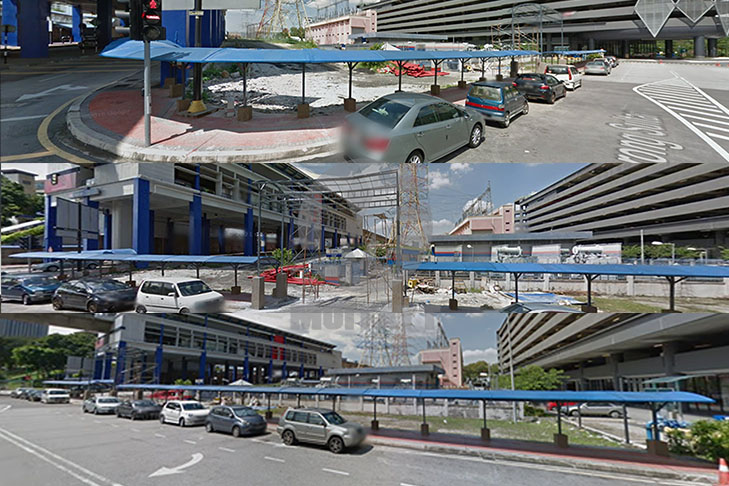
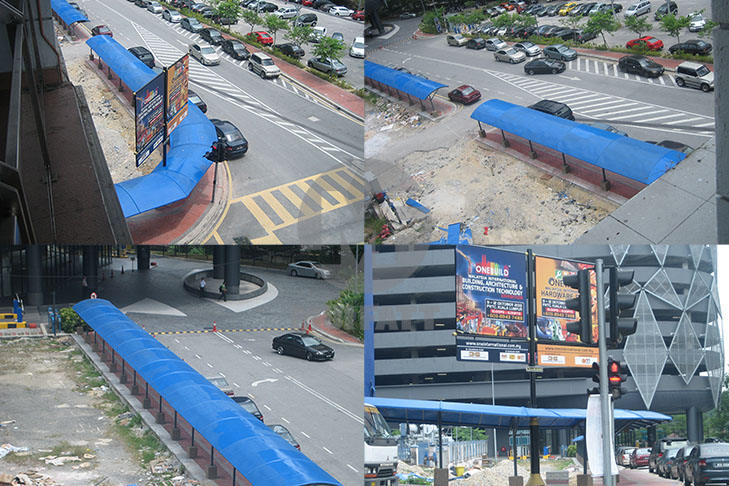
Read more from our project references blog article - Taman Jaya LRT Station – FRP Walkway Project Reference
The FRP pultrusion process provides high-performance structural profiles with superior durability, strength, and design flexibility. Whether you're working on an industrial, marine, or infrastructure project, Mui Fatt offers high-quality pultruded FRP profiles tailored to your needs.
Frequently Asked Questions (FAQs)
What makes pultruded FRP stronger than traditional materials?
Pultruded FRP has a high strength-to-weight ratio and excellent corrosion resistance, making it more durable than steel or aluminum in many environments.
Can pultruded FRP profiles be customized?
Yes, pultruded FRP can be manufactured in various shapes, sizes, and resin formulations to meet project requirements.
How does pultrusion compare to injection molding?
Pultrusion is a continuous process for producing long, uniform profiles, whereas injection molding is better suited for small, complex parts.
Where can I purchase FRP pultruded profiles?
You can explore our Pultrusion Profiles or connect with our Sales Representative via WhatsApp or email at sales@muifatt.com.my for a consultation.
#FRPpultrusionprocess #pultrudedprofiles #fiberglasspultrusion #pultrusionvshandlayup #structuralFRP #benefitsofpultrusion #steelstructurealternative #alternativematerialtosteel #substitutesforsteel #highstrengthcomposites
Disclaimer:-
The content on this site is for general information and entertainment purposes and does not constitute legal counsel. We strive to keep our information as accurate as possible. However, we make no warranties about the completeness, accuracy, reliability, suitability, or availability with respect to the information contained on this page. You should rely on this information at your own risk. This website may include links to other third-party sites. These links are provided as a convenience to you as a reader, user, or browser only. We make no representation, warranty, or guarantee, nor do we endorse or take responsibility for any of the content of such sites.
Stay in touch with us if you’re interested in hearing from us promptly.
- Website - https://www.muifatt.com.my/home/
- Facebook - https://www.facebook.com/muifattmarketing
- Instagram - https://www.instagram.com/muifattmarketing/
- Google - https://goo.gl/maps/WxVY13gNcaRTS7Jp6
- Youtube - http://www.youtube.com/@MuiFattMarketing
- TikTok - https://www.tiktok.com/@muifattmarketing
- LinkedIn - https://www.linkedin.com/company/mui-fatt-marketing-sdn-bhd-
- Linktree - https://linktr.ee/muifattmarketing
- Shopee - https://www.shopee.com.my/muifattmarketing
- Lazada - https://www.lazada.com.my/shop/mui-fatt-marketing
Recent Blog
Mui Fatt Engineering Insights - FRP Panel Tank Installation
Get to know the step-by-step assembly process of FRP sectional panel tanks, based on Mui Fatt’s industry-proven practices. This easy-to-digest guide is ideal for project managers, contractors, and technical personnel involved in water storage tank installation across Malaysia.
FRP Panels vs Traditional Alternatives: The Ultimate Guide to Durability and Sustainability
Explore why FRP (Fiberglass-Reinforced Plastic) panels outperform traditional materials like steel, plywood, and PVC in durability, sustainability, and cost-effectiveness. Discover real-world applications in MyKiosk projects and cold truck panel assembly, where FRP’s superior insulation, corrosion resistance, and lightweight properties deliver long-term benefits.
Comparing FRP Waterproofing with Traditional Systems
Is FRP lamination a better waterproofing method than traditional systems? Explore this complete guide with real project examples and see why FRP is gaining traction across Malaysia.
Benefits of FRP in Food Handling & Processing
With hygiene, durability, and corrosion resistance at its core, FRP (Fibreglass Reinforced Plastic) is becoming a preferred material in the food industry. This article explores why FRP is ideal for food handling equipment such as supermarket fish trays, water tanks, and food factory platforms, plus how Mui Fatt is delivering proven solutions through its successful FRP applications.
Mui Fatt Insights: Advanced Materials for Modern Needs
Is stainless steel the best for wet areas? This article explains why more industries are switching to FRP for its corrosion resistance, hygiene benefits, and longevity, especially in food displays and chemical exposure zones.
How FRP Supports Modern Data Center Infrastructure
Discover how fiberglass-reinforced plastic (FRP) is reshaping data center construction. Learn its key advantages, comparisons with other materials, and where to apply FRP—from rooftop chillers to cooling tanks.
Understanding FRP Filament Winding: Process, Benefits & Comparison
This article explores the FRP filament winding manufacturing method, how it differs from other FRP techniques, why it’s still widely used, and its long-term value for projects like high-strength tanks and cylinders.
